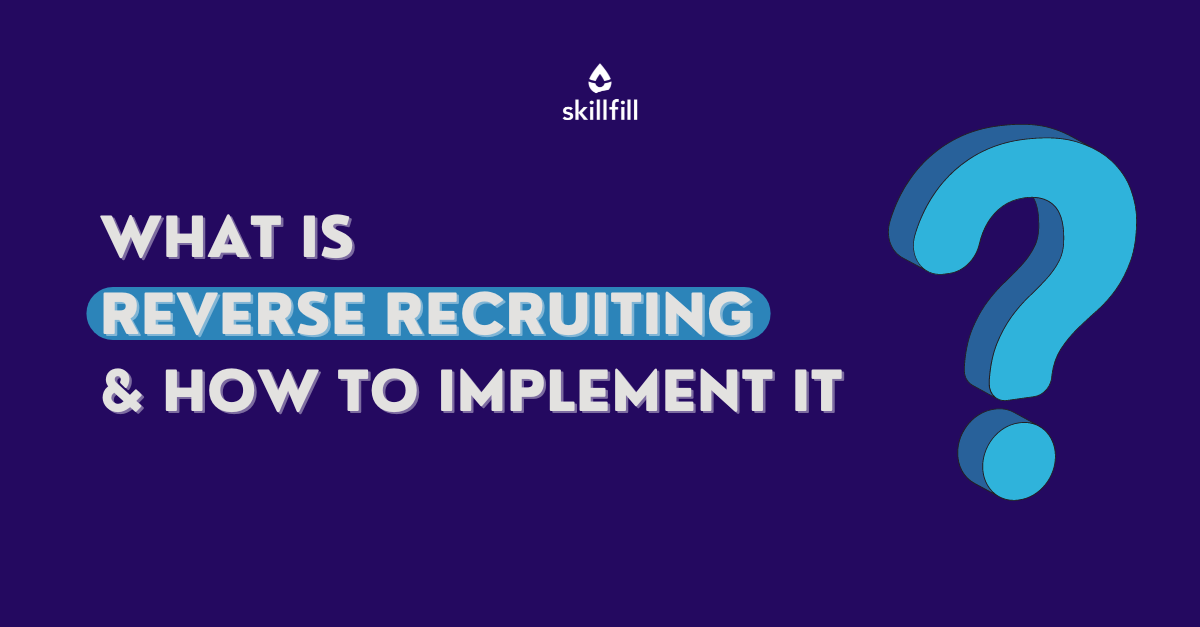Transform Your Hiring Process with Reverse Recruiting Strategies
Transform Your Hiring Process with Reverse Recruiting Strategies
Blog Article
Boost Your Hiring Game With Strategic Reverse Recruiting Strategies
In the world of ability procurement, traditional recruiting approaches have actually long been the standard. Nevertheless, as the landscape of working with progresses, organizations are significantly transforming to innovative techniques such as tactical reverse recruiting to gain an one-upmanship in protecting top skill. This change in mindset requires a thoughtful reconsideration of how business come close to the working with process, focusing on bring in passive prospects rather than solely relying on active task seekers. By turning the script and proactively engaging with individuals who may not be actively seeking new possibilities, organizations open themselves as much as a swimming pool of untapped possibility. This critical strategy not only widens the talent pipe yet also grows an extra diverse and skilled workforce.
Understanding Tactical Reverse Hiring
Tactically leveraging the principle of reverse recruiting can significantly enhance your organization's skill procurement technique. By flipping the traditional employment strategy on its head, reverse recruiting entails proactively looking for and attracting easy prospects who might not be actively seeking brand-new possibilities. This positive technique allows firms to touch right into a pool of top quality ability that might not be available via traditional work posts alone.
Recognizing the complexities of strategic reverse recruiting is important for its successful implementation. It calls for a deep understanding of the industry landscape, competitor evaluation, and the particular capability that remain in high demand. reverse recruiting. By conducting complete research study and leveraging market understandings, organizations can determine and engage with top talent in an extra individualized and targeted way

Advantages of Reverse Hiring
Reverse recruiting uses a special approach to ability acquisition by proactively engaging with easy candidates who may not be proactively looking for task chances. This method permits firms to use a swimming pool of ability that standard recruiting methods might overlook. Among the crucial advantages of reverse recruiting is the capacity to target candidates who are currently used and pleased in their existing functions. These individuals are typically leading performers in their respective fields, bringing useful skills and experience to the table.

Key Parts of Reverse Recruiting
Having actually discovered the advantages of reverse recruiting in targeting leading performers who are content in their present duties, it is necessary to understand the key elements that make this technique successful in attracting easy candidates. The first key component is developing a solid employer brand name. Easy candidates are typically not proactively seeking brand-new opportunities, so having a positive credibility as an employer can stimulate their rate of interest. Leveraging social media platforms and company review websites to display company society and worths can help in this respect.
One more vital component is personalized outreach. Since passive prospects are not actively looking for tasks, common employment messages are likely to be overlooked. Customizing outreach initiatives to highlight just how the specific abilities and experiences of the prospect align with the firm's needs can dramatically enhance the opportunities of getting their interest.
Additionally, promoting relationships with easy prospects in time is vital. Frequently involving with them with networking occasions, sector image source meetings, and even periodic check-ins can help build connection and trust fund, making them more responsive to possible job possibilities in the future. By integrating these essential components into reverse recruiting approaches, companies can properly draw in and work with top skill from the swimming pool of passive prospects.
Implementing Reverse Hiring Methods

Furthermore, developing compelling employer branding and showcasing a favorable firm culture can assist draw in easy prospects and motivate them to consider new profession chances. Constructing a talent community or skill pipeline can additionally be advantageous in supporting partnerships with easy prospects gradually, maintaining them engaged and interested in potential future duties within the organization. On the whole, executing reverse recruiting strategies calls for a positive and individualized method to skill acquisition, concentrating on developing purposeful links with easy candidates to drive long-term recruitment success.
Measuring Success in Reverse Hiring
One important metric is the quality of candidates involved with reverse recruiting channels. By determining the conversion rate of passive candidates right into active candidates or hires, organizations can assess the performance of their reverse recruiting initiatives.
Keeping an eye on retention prices amongst candidates hired via reverse methods can provide understandings into the long-term success of the technique. High retention rates suggest that the prospects sourced with reverse recruiting are a great fit for the organization, contributing positively to its total talent pool.
Final Thought
To conclude, calculated reverse recruiting provides a special strategy to employing that concentrates on drawing in top talent via aggressive interaction and relationship-building. By leveraging this technique, organizations can get a read competitive side in the talent market and boost their recruitment results. It is important to recognize the advantages, vital components, and techniques of reverse recruiting to effectively apply and determine web link success in this cutting-edge method to hiring.
Report this page